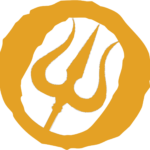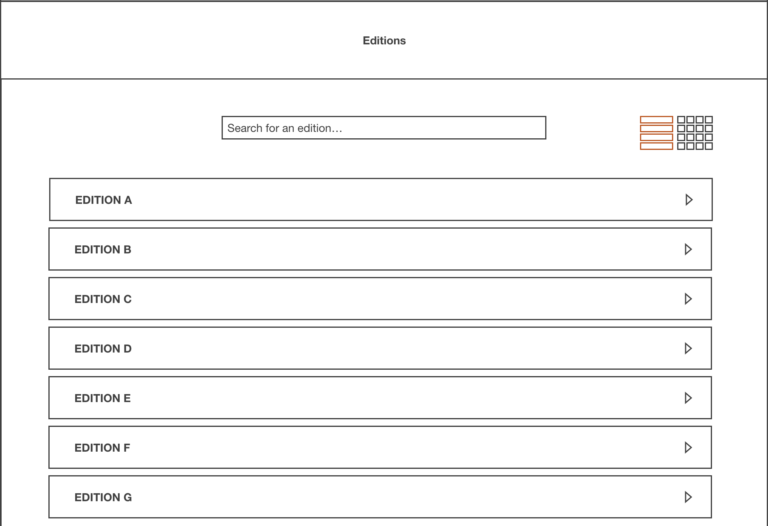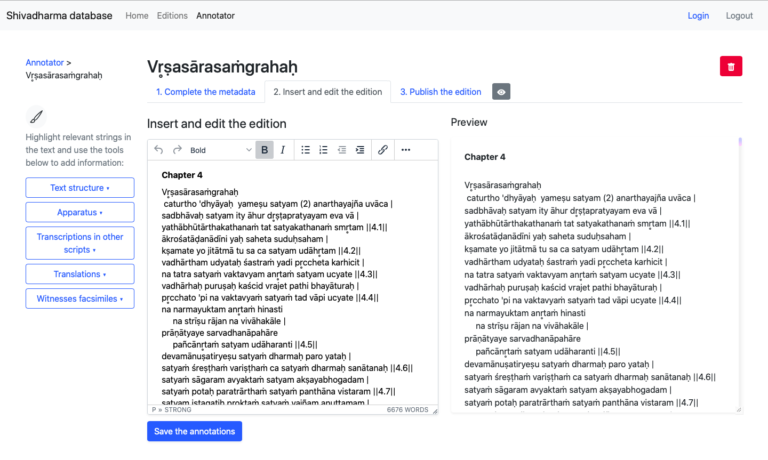
The Śivadharma Project aims at studying an immense wealth of resources related to the Śivadharma tradition, which contributed to the spread of Śaivism in South Asia from the early Middle Ages up to modern times. Our main resources are Sanskrit and Tamil manuscripts and inscriptions transmitting the precepts that Śiva handed down to mankind.
While a part of the research group from L’Orientale University of Naples, University of Bologna – History and Cultures Department, and the EFEO, Pondicherry Centre, is engaged in the study of this heritage, the research at University of Bologna – Classical Philology and Italian Studies Department focuses on the development of digital tools for the production, storage, cataloging, annotation, visualization and exploration of the resources.
In order to fulfill the set objectives, we are planning two web applications, nested into each other and thus resulting into a single main application:
- The Śivadharma database for the preparation, publication, updating and visualization of editions of manuscripts and epigraphic texts;
- The Śivadharma archive for archiving, cataloging and visualizing the facsimiles of the witnesses.

The design stage
The initial application design phase consisted in a series of activities aimed at defining a structured application model for the preparation and publication of digital critical editions, and for archiving and cataloging the facsimiles of the witnesses. The study of the inscriptions will be another step forward in the project in the coming months: for now the research is focused on the manuscripts domain, also due to the impossibility of conducting field-work under the current circumstances.
The design phase involved an analytical investigation of the domain and the needs of the researchers with respect to their resources, and ended with the compilation of a series of requirements.

Śivadharma database
Given the conceptual and structural complexity of critical editions, it was necessary to identify and analyze their multiple levels to define an edition model and, consequently, to design tools suitable for its management.
The Śivadharma database will be able to manage:
- Reconstructed text resulting from the interpretative and critical choices of the editors and related metadata;
- Specific structure of the reconstructed text (management of chapters, division into verses, etc.);
- Critical apparatus (management of the different variant readings, of the reference manuscripts for each lesson, etc.);
- Parallel sources;
- Philological and historical notes;
- Translation into English;
- Transcription of the text of the edition in different scripts (Latin and Devanāgarī or Tamil);
- Reference and link to facsimile witnesses hosted in the Śivadharma archive.
It is intended to integrate an annotation schema that is computable and suitable for the production of open data, specifically based on RDFa to formally express the critical interpretation of the editors, to make explicit the implicit relationships between the entities identified in the texts of the editions and to highlight their multidimensionality. It is also planned to implement an export function in various formats, including XML/TEI to ensure interoperability with other editions.

Śivadharma archive
The Śivadharma archive will contain the facsimiles and the metadata of the witnesses of manuscripts and inscriptions. This application is to be integrated in the Śivadharma database in order to create a dialogue between the editions and the reference manuscripts, and between the inscriptions and the corresponding facsimile sources.
Future goals
Both applications are under development. During this phase we are proceeding by integrating popular technologies with open-source licenses to develop a highly customizable open environment, whose users will be able to create, publish, manage and update their editions directly online.
With this project we intend therefore to contribute to the creation of a desk of useful tools for the philologist’s work.
